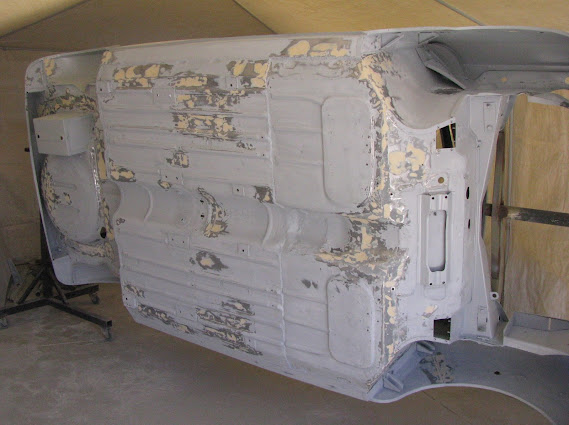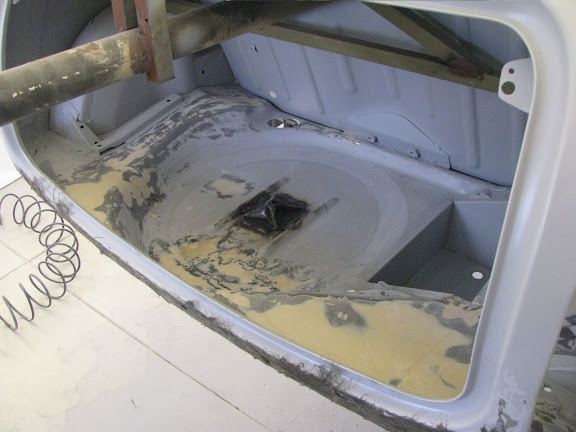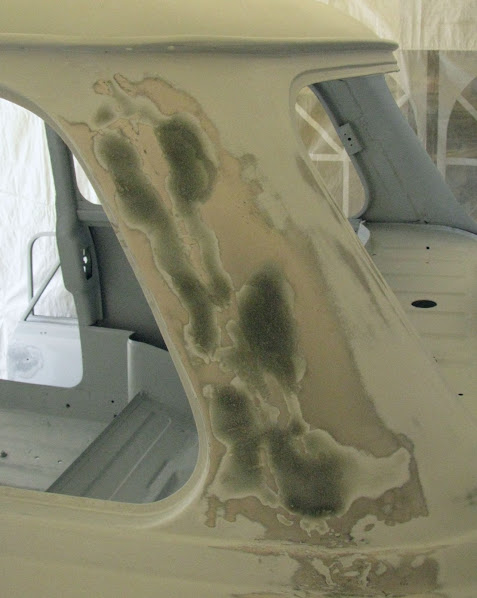The Mini shell, doors, bonnet and boot-lid have been painted in epoxy primer and the next stage was the significant amount of time required for body filler applications, sanding, blocking etc.
The shell underbody was dealt with first by sanding down to 80 grit to prep any areas that required body filler applied in areas that had been repaired, or to resolve dents and panel ripples. Really minor imperfections were not dealt on the underbody - this is obviously not a concours car.
As seen in the photo above there were a lot of areas where I had sanded back to bare metal, so 2K epoxy primer was repainted over the entire area to reseal the bare metal and cover the body filler.
The boot floor has been repaired using a second-hand boot section and required a few mm of filler in a couple of small areas that were a bit rough, and a skim in others. 
I had previously forgotten to fit a spare wheel clamp boss on the boot floor (this did not exist on the original car) so this was also welded on before repainting.
The boot was then repainted in 2x additional coats of epoxy primer.
Some body filler was applied underneath the roof gutter to fix the visible wavy-ness after removing the drip rail from under the gutter.
Since the entire floorpan in the interior will be covered with sound deadener and carpet, I didn't bother with putting any filler on the floor however in the modified rear storage bins in the cabin needed a few small areas of filler applied.
The deseaming welds on the A-pillar & C-pillar areas resulted in some minor warping of the exterior panels so I applied some short strand fibreglass filler to fill some of the localised deeper imperfections and sanded it back with 40 grit sandpaper. Like before, these areas were repainted in 2x coats of additional epoxy primer to cover the fibreglass and reseal areas which had bare metal exposed.




Comments
Post a Comment